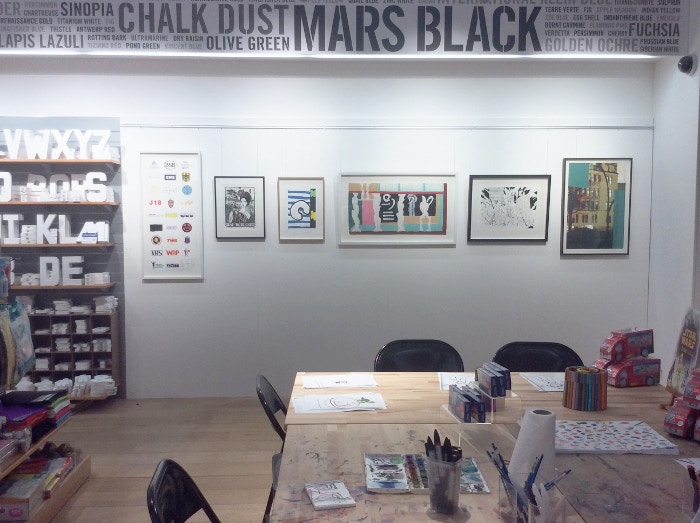How to price your artwork
Posted by Cass Art on 3rd Jun 2018
There is no perfect formula for pricing your artwork – but we’ve asked our artists for a few helpful hints to help you get started.
Plan Ahead
Always have a set price in mind so you don’t panic when put on the spot. If someone approaches you to ask a price, they are already considering buying, and if you encounter a few instances when they turn away after revealing the price, consider rethinking the pricing structure. However, never adjust them on the spur of the moment! Take the time to consider what the worth is.
Fair Price
Consider the materials you’ve used and the time you’ve spent from flash of inspiration to finishing touches. Keep track of your expenses as your create your piece to make sure you don’t end up losing money. Take into consideration utilities, professional fees like framing, material costs, transportation, postage or studio rent. Then always remember to include the sales commission if you’re going through a gallery or agent. These ‘hidden costs’ can often catch you out in the long run.
Start High
If you start at a low price some may take that as a sign that the artist has low confidence, but a high starting price shows ambition. However, use common sense and don’t start on a huge number that will put potential buyers off. Keep in mind a professional hourly wage rather than minim wage – to create art is skilled work!

Protect Your Prices
If you have kept track of your expenses and time, then you will be able to logically back up the price of the artwork. You may need to defend your prices against dealers as well as buyers so make sure to keep track of everything and don’t undervalue the work you’ve put in.
Compare Your Prices
Make sure to check what similar artists are offering and how they price their work. This will help you evaluate your work from a different standpoint and ensure it’s well placed within the market. Visit exhibitions by similar artists and talk to dealers to get a feel for the current climate. They may use different formulas to you when they approach their pricing, but it’s a good idea to learn what these are so you’re aware of the different options.
Works Can Be Priceless
Some works are just too special, don’t be tempted to part with it if you can’t find a suitable price. Artwork can be worth much more than money when timed right and can be part of your own permanent collection.
Leave Negotiating Room
Depending on the environment, leave a little extra room to negotiate if you expect there to be some bartering. Buyers often approach a seller prepared to haggle down the price. Set your lowest price in your mind and resist the pressure to go beyond it.

By Demand
Don’t be afraid to increase your prices if demand is high for your work. If you’re experiencing a high degree of success then it’s the best time to raise your prices, especially if it’s been consistent for at least six months. However, always be able to back up your increases with facts – never raise them whimsically. Raise them slowly, around 10 – 20%, so that you don’t alienate previous buyers from coming back again.
Be Consistent
It’s recommended to increase prices after you’ve been featured in a number of shows, representation or inflation. However, be consistent online as well – it won’t be good news if the galleries find out they’re undersold online or directly through yourself.
Keep a Record
Always record who buys your work, their name and the price. You can then bring this up to back up some of your existing prices further down the line and show them to dealers if you’re looking for representation from a gallery.
Size Also Matters
Buyers will usually expect to pay less for smaller works and it’s a hard rule to follow, as that doesn’t necessarily mean less work has gone into them. However, it’s something to be aware of when you start to price your work.

Editions
If you work in print or photography you’ll have an extra element to take into account when you’re pricing your work – editions! Make sure to number and sign each piece - first editions should be sold at a slightly higher price as they are considered the most valuable.
Impostor Feeling
Knowing is half the battle, but sometimes it’s hard to feel comparable to artists around you. Remember the pricing tips above and don’t forget to value you’re hard work.
Discount Policy
You can also add a disclaimer to a price list so it gives you some wiggle room if a buyer feels that your price list is too high. You can offer a discount when it’s a regular buyer or first time to help get regular business. However, don’t advertise them as on sale as this will damage the reputation of your work and discourage buyers from purchasing your work at full price.
Promote
Improve sales by promoting your work through blogs, local news and your website. Advertise that your work is on sale to make people aware that they are available. You can start an email newsletter to circulate new work to consistent followers or previous buyers.
Be Social
Talk with other artists about their work and share ideas on how to promote each other – from collaborations to group exhibitions. You can even offer to shout out about each other’s work on social media or to each other’s mailing lists.
Getting started with pricing may be one of the hardest parts for some artists when they launch themselves into the market. As always with art, there is no right answer – just be confident in what you offer and take the leap.



